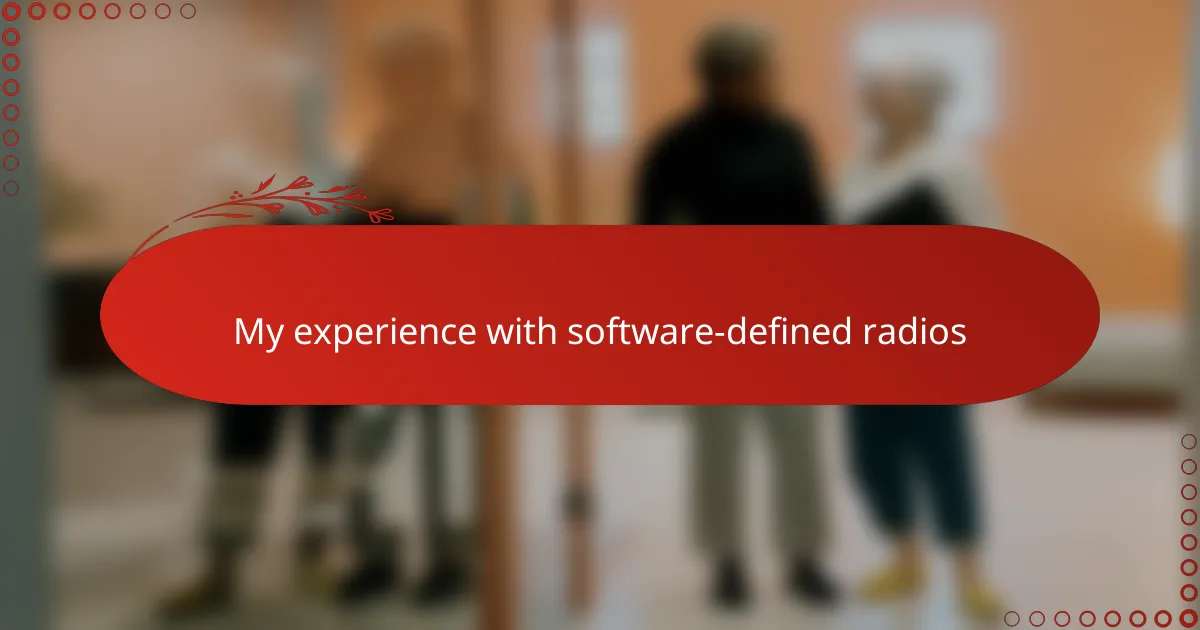Key takeaways
- Software defined radios (SDRs) use software to process signals, allowing flexibility and adaptability across different frequencies and modulation types.
- The setup process can be challenging but rewarding, involving hardware connection and software configuration for optimal performance.
- SDRs enable dynamic frequency management and advanced signal processing techniques, enhancing broadcast quality and user control.
- Patience, a strong foundation in radio principles, and a willingness to experiment are essential for success in using SDR technology.
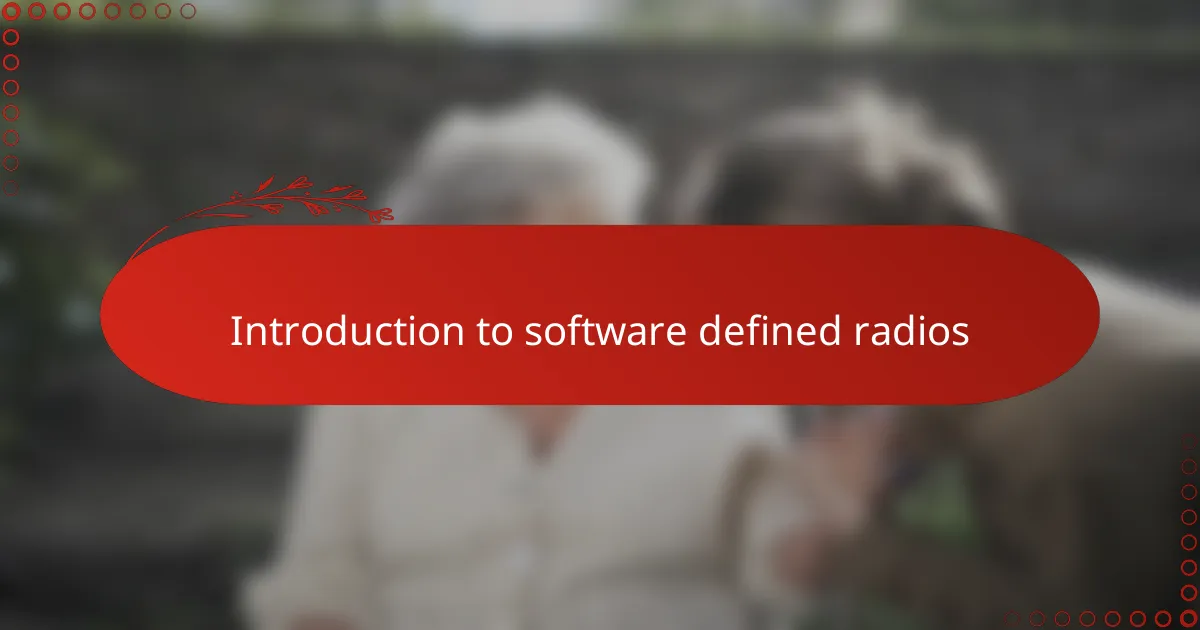
Introduction to software defined radios
When I first came across software defined radios (SDRs), I was amazed by their flexibility. Unlike traditional radios, which rely heavily on hardware components, SDRs use software to process radio signals. This meant I could experiment with different frequencies and modulation schemes simply by tweaking code, which felt like unlocking a whole new level of radio exploration.
Have you ever wondered how a single device can adapt to so many different radio standards? SDRs achieve this by digitizing incoming signals and using software algorithms to interpret them. In my experience, this capability opened doors to learning and creativity that rigid hardware setups just don’t offer.
What struck me most was how SDRs democratize radio technology. You don’t need expensive, specialized equipment anymore—just a computer and an SDR device. This approach not only makes radio broadcasting accessible to enthusiasts like me but also sparks curiosity about the vast world of wireless communication.
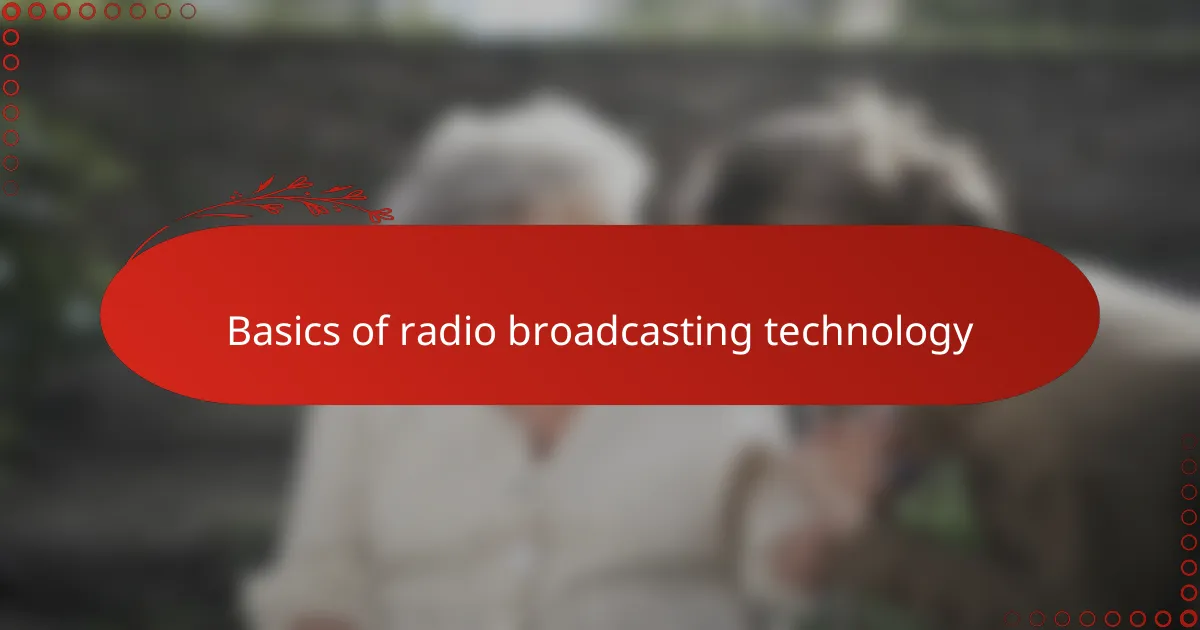
Basics of radio broadcasting technology
Radio broadcasting technology might seem straightforward on the surface, but it’s actually a fascinating blend of physics and engineering. At its core, it’s about converting audio signals into electromagnetic waves that travel through the air to reach receivers. When I first learned this, I was surprised at how invisible waves could carry music or voices across vast distances.
One key part that grabbed my attention early on was modulation—the process of embedding information onto a radio wave. Have you ever wondered why there are AM and FM stations? Those different modulation techniques change how the signals are packaged and transmitted, affecting everything from sound quality to range. Understanding these basics gave me a new appreciation for the signals we often take for granted.
Another thing I found intriguing was the role of transmitters and antennas. It’s not just about blasting power into the air; antennas have to be designed carefully to send signals efficiently. When I set up my first simple broadcast, getting the antenna placement right made all the difference in reaching my intended audience. This hands-on experience made the technical concepts feel alive and practical.
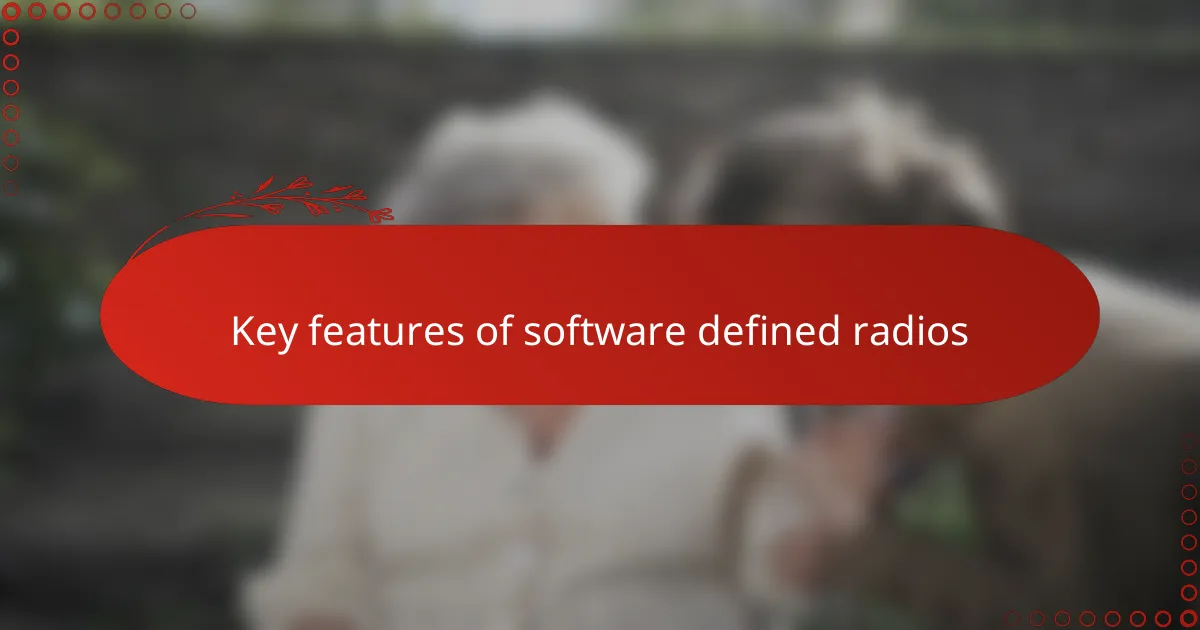
Key features of software defined radios
One of the standout features of software defined radios that really caught my attention is their incredible adaptability. Instead of being locked into a single frequency or modulation type, SDRs let you switch modes simply by changing software settings. I remember the first time I modulated between AM and FM signals with just a few clicks— it felt like I had a magic wand rather than a piece of hardware in my hands.
Another feature I found fascinating is the ability of SDRs to digitize and process a wide range of frequencies simultaneously. This meant I could monitor multiple channels at once or decode signals that I never thought I’d have access to. Have you ever tried tuning into different radio bands but felt limited by your device? SDRs erased that boundary, giving me a broader window into the radio spectrum.
What also impressed me was the reconfigurability of SDRs for various applications—from simple listening tasks to complex signal analysis. This versatility made me realize that these radios are not just tools, but platforms for experimentation and learning. With each software update or new algorithm, my SDR setup felt like it was evolving alongside my growing skills and curiosity.
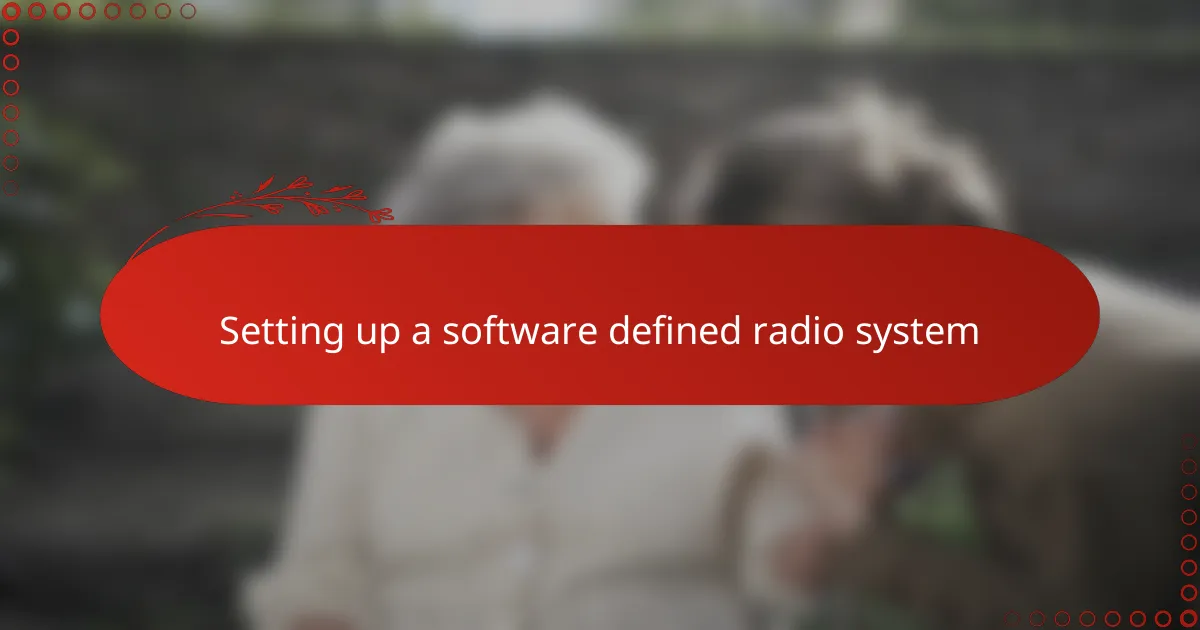
Setting up a software defined radio system
Setting up my first software defined radio system was both exciting and a bit overwhelming. I had to connect the SDR hardware, usually a USB dongle, to my computer and install the right software—something like SDR# or GQRX. At first, it felt like assembling a puzzle where each piece had to fit perfectly before I could start listening.
One challenge I didn’t expect was configuring the drivers and ensuring the SDR was properly recognized by the software. Have you ever dealt with tech that seems simple but hides little quirks? That initial troubleshooting made me appreciate how crucial the setup process really is for smooth operation. Once everything clicked, I felt a real sense of accomplishment—it was like unlocking a new superpower.
Then came the fun part: calibrating the antenna and adjusting settings to optimize reception. I quickly learned that placement and orientation matter more than I assumed. By experimenting with antenna positions, I could pull in clearer signals or pick up stations I hadn’t noticed before. This hands-on tweaking turned setup from a chore into an immersive learning experience.
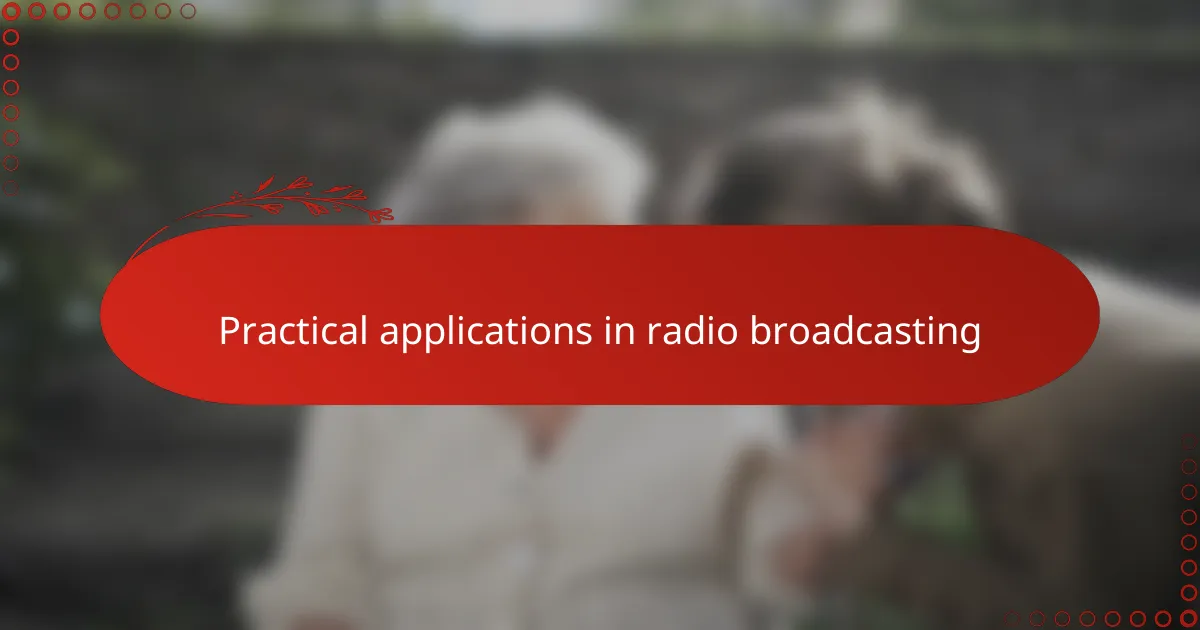
Practical applications in radio broadcasting
When I started using SDRs in actual broadcasts, I was amazed at how easily I could switch between different transmission standards. Have you ever struggled with juggling multiple pieces of hardware to cover AM, FM, or digital radio? With SDRs, one device handled it all seamlessly, saving me time and hassle.
Another practical application that blew me away was dynamic frequency management. Instead of being stuck on a single channel, I could monitor interference and adjust frequencies on the fly. This flexibility made my broadcasts clearer and more reliable, especially during crowded airwaves.
Finally, I found SDRs incredibly helpful for experimenting with signal processing techniques like noise reduction and audio enhancement. It felt empowering to fine-tune the sound quality right from my software interface, something traditional equipment rarely allowed without expensive add-ons. Have you ever wanted that level of control? SDRs gave me exactly that.
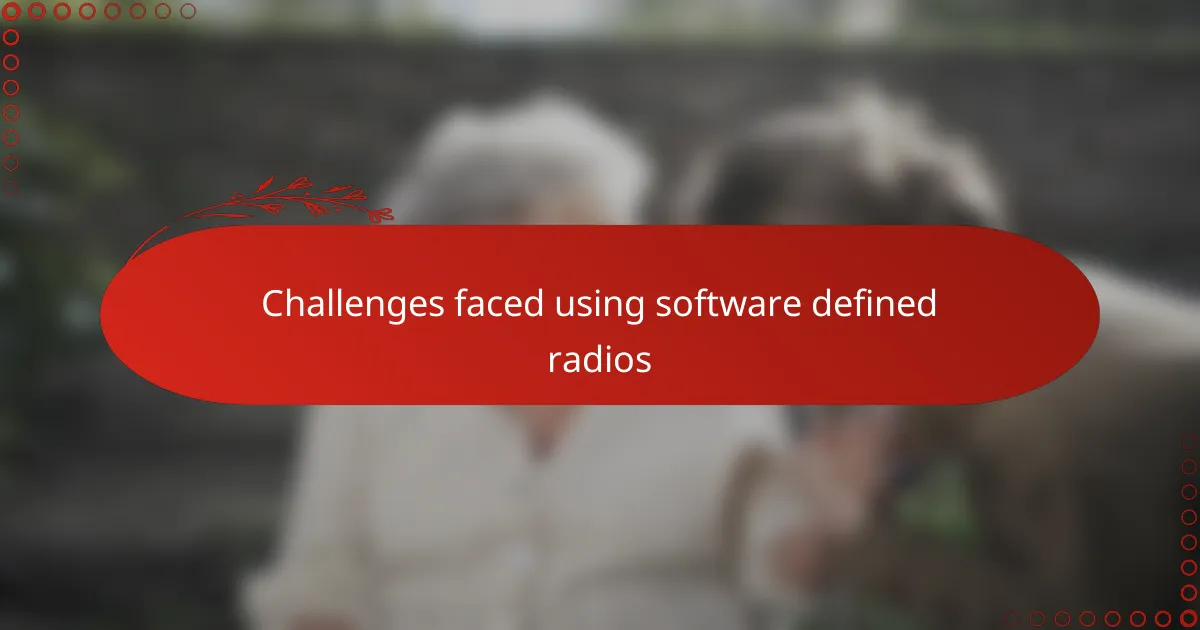
Challenges faced using software defined radios
Using software defined radios hasn’t been without its hurdles. One challenge that stood out for me was dealing with signal interference and noise. Even with sophisticated software filters, getting a clean, stable reception sometimes felt like trying to hear a whisper in a crowded room. Have you ever experienced frustration when the signal just won’t clear up despite all your adjustments? I sure have, and it reminded me that SDRs, while powerful, aren’t magic.
Another difficulty I encountered was the steep learning curve behind the software itself. Unlike traditional radios where controls are mostly hardware knobs, SDRs require navigating complex interfaces and understanding underlying digital signal processing concepts. At times, this felt overwhelming—like suddenly being thrown into the deep end of radio theory and programming. Yet, that complexity also made every small victory more rewarding.
Finally, there’s the issue of hardware limitations. My early SDR devices sometimes struggled with dynamic range and processing power, especially when handling wide frequency bands or strong signals nearby. Balancing performance and affordability was tricky—I realized that investing in better components often meant stretching my budget, which isn’t always easy. Have you found yourself torn between cheaper gear and higher specs? It’s a common dilemma in the SDR world.
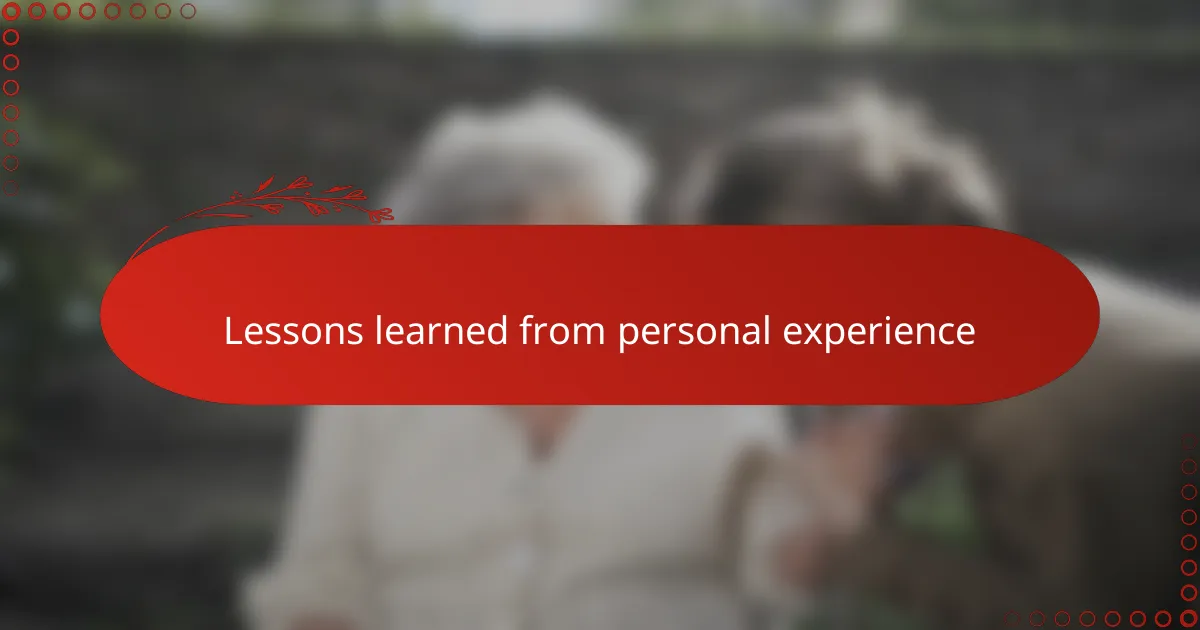
Lessons learned from personal experience
One key lesson I learned early on is patience truly pays off. When I first tried to optimize reception, I was eager to get results fast, but it took multiple adjustments—sometimes frustratingly small ones—to find the sweet spot. Have you ever felt that mix of excitement and impatience when technology doesn’t instantly cooperate? That experience taught me that persistence is essential in SDR work.
I also realized how valuable a strong foundation in basic radio principles is. At times, I got caught up in software features and overlooked the fundamentals like antenna placement or signal propagation. When I revisited those basics, my SDR performance improved noticeably. It’s a reminder that no matter how advanced the software, the physics behind radio waves remains king.
Lastly, embracing experimentation was crucial to my growth. Instead of fearing mistakes or failures, I learned to treat every unexpected result as a learning opportunity. Trying out unconventional settings or decoding unusual signals became less intimidating—and more fun. Have you noticed how stepping outside your comfort zone can open new doors? For me, SDRs became not just a tool, but a playground for curiosity.
